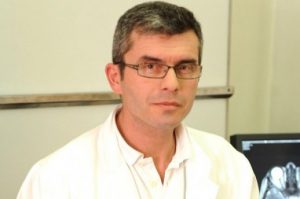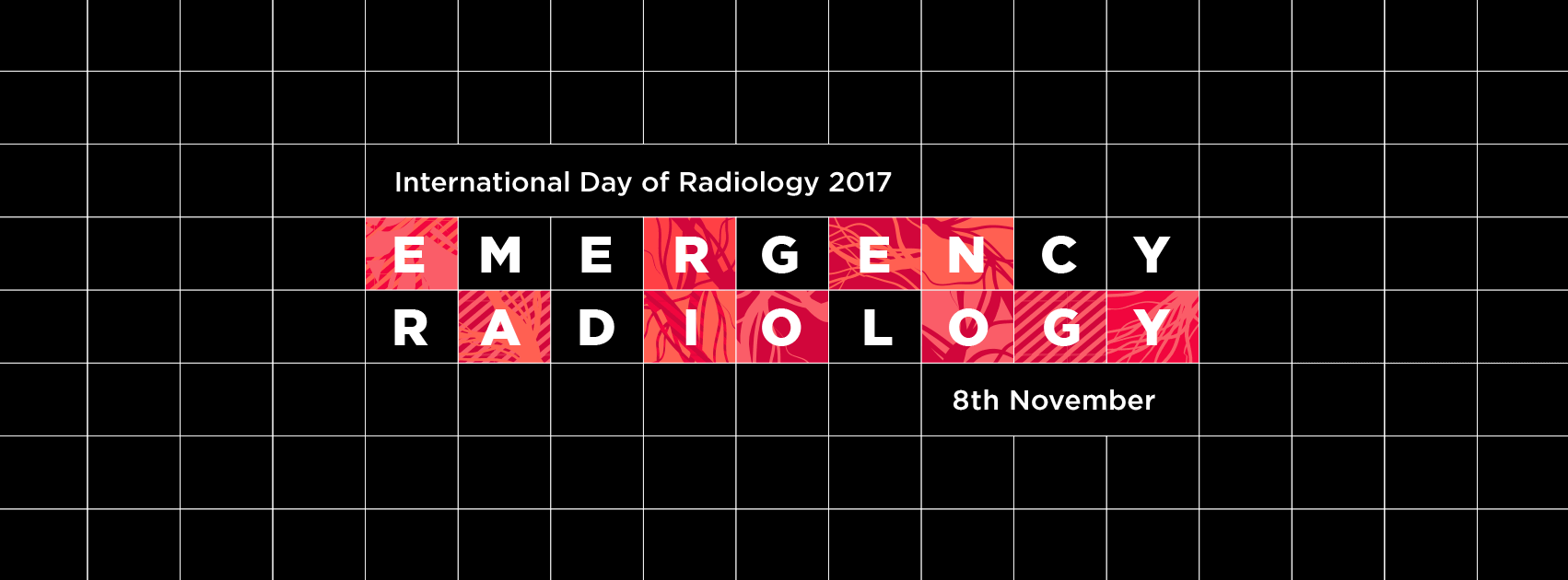Croatian hospital study showed ultrasound requests doubled and CT requests tripled in 10-year period, says Rijeka-based specialist
This year, the main theme of the International Day of Radiology is emergency radiology. To get some insight into the field, we spoke to Prof. Damir Miletić, head of the radiology department at the Clinical Hospital Centre in Rijeka, Croatia.
European Society of Radiology: Could you please describe the role of the radiologist in a typical emergency department in your country?
Damir Miletić: Radiologists are involved with the majority of patients admitted to the emergency department because most adult patients require radiology services as part of their treatment. Sometimes we wonder if all these cases really are emergencies. However, during a busy shift, we don’t have time to check the indication, particularly for conventional radiography. We notice that proper clinical examinations are sometimes not only supplemented with, but often replaced with imaging and blood tests. That is magnified when the emergency department workload overwhelms the staff’s capacity. We encounter ‘defensive medicine’ in some clinical scenarios, but in emergency radiology, it is more evident than in other radiology specialties. Radiologists are imaging consultants for cross-sectional imaging indications like CT, MR or ultrasound in emergency settings because referring physicians are required to contact the radiologist to briefly explain their requests. Conventional radiography, however, does not usually require a radiologist’s approval.

Prof. Damir Miletić is an abdominal radiologist who is head of the radiology department at the Clinical Hospital Centre in Rijeka, Croatia; and chairman of radiology at the medical faculty at the University of Rijeka.
ESR: What does a typical day in the emergency department look like for a radiologist?
DM: A typical day for a radiologist in our country varies with the size of the hospital and its spectrum of specialty departments. In some hospitals, that means 20 patients per 12-hour shift. However in others, that number may increase up to 80 to 120 patients, including 10 to 15 CT scans and 5 to 10 ultrasound examinations. In hospitals with 24-hour shifts, that may be exhausting for radiologists and residents. In Croatian hospitals, interventional and paediatric radiologists have daily or weekly on-call duties. A pilot study in the Croatian university hospital revealed that ultrasound requests doubled and CT requests tripled within the 10-year follow-up, while the number of patients admitted to the emergency department is held constant. That study clearly shows a significant increase in cross-sectional diagnostics per emergency patient.
ESR: Teamwork is crucial in an emergency department. How is this accomplished in your department and who is involved?
DM: A typical radiology team in the emergency-radiology department includes a radiologist, a resident and a radiology technologist. During day shifts, they take care of emergency patients and synchronise emergency examinations with those of regularly scheduled patients. Frequently, experts in various radiology specialties are consulted and, when necessary, directly involved in problem-solving. They enrich quality of our radiological service, particularly when postoperative complications are suspected or in complex interdisciplinary cases. Overnight and weekend shifts are completely different because radiologists and residents are dealing with the whole spectrum of radiological emergencies. In paediatric emergencies, clinicians frequently follow their patients to radiology to attend the examination. This is also the case for adult patients who present with life-threatening emergencies and for patients who require a CT examination due to polytrauma.
ESR: How satisfied are you with the workflow and your role in your department? How do you think it could be improved?
DM: As the head of a typical teaching hospital’s radiology department, I try to organise structured CT, MR, and ultrasound shifts, which are dedicated to a particular pathology and organ system to improve and optimise procedures. That concept has proved to be more efficient. It includes skilled technologists and expert radiologists, but it also helps us schedule patients based on clinical data provided by referring clinicians. Typically, our radiologists are experts in two to three fields, but they are trained to solve emergencies in all other capacities as well. Radiologists dedicated to a single radiology specialty are exceptions in Croatia. Only interventional and paediatric radiologists have one specialty. Caseloads in Croatian radiology departments has increased significantly in the past decade, while the number of radiologists has not increased. Long waiting lists create a lot of pressure on radiology departments, which is ironic given the limited radiology staff and equipment and the unlimited physician referrals. The topic of unnecessary examinations is very popular in many public discussions about the quality of the healthcare system in Croatia. In emergency radiology, we must be cautious because of unexpected findings that we could not predict before imaging is completed. There is convincing data in the literature about unexpected, but clinically relevant, incidental findings on cross-sectional diagnostic modalities. Radiologists who evaluate the necessity of an examination from the emergency department might find themselves on thin ice if they decide to reject the examination as not clinically founded. We may find that many physicians use imaging not to confirm their clinical suspicion, but to exclude pathology within their scope, which is typical for defensive medicine. Hence, we are not likely to see a substantial decrease in the proportion of negative findings, and we should endeavour to keep the numbers at the present level.
ESR: Which modalities are used for different emergencies? Could you please give an overview sorted by modalities?
DM: Conventional radiography is widely used in almost all clinical scenarios. Emergency ultrasound is standard procedure in assessing patients with suspected renal colic; right upper quadrant pain; blunt abdominal trauma; palpable or visible tumours; or pleural and peritoneal effusions. Doppler ultrasound is used regularly in cases of suspected vein thrombosis. In the paediatric population, typical ultrasound indications include clinical suspicion on acute appendicitis, ileocecal invagination, ileus, hypertrophic pyloric stenosis and acute scrotum. In paediatric emergencies, ultrasound is the first, and only, diagnostic choice in the vast majority of indications, except neuroradiological diagnostics in children with closed anterior fontanel.
CT is the method of choice for acute vascular incidents, suspected ileus or perforation of hollow viscera, or in patients who sustained severe injuries. It is a problem-solving method for complicated cholecystitis (gangrenous or perforating), suspected pulmonary embolism, stroke and in many other indications. In fact, CT is a workhorse in emergency rooms.
MR in emergency settings is not available in all Croatian hospitals, but is available in hospitals with neurosurgery departments. Typical indications are acute medullary-compression syndrome and spinal trauma with neurological deficit and inconclusive CT findings.
ESR: Is teleradiology an issue in emergency radiology? If yes, how so, and how often is it used?
DM: Teleradiology in emergency settings is still not widely used in Croatian hospitals because of radiologist’s around-the-clock availability. Several hospitals are starting to use teleradiology because of a shortage of radiologists. There is long-standing teleradiology service at the national level that is used for emergency room patients for brain CTs who are assessed for intensive neurological care or neurosurgery intervention (e.g. neurotrauma, bleeding intracranial artery aneurysms and bleeding brain tumours) to decide whether to transfer the patient to the referring centre or to continue with conservative therapy in the primary hospital. This also happens in paediatric radiology in Croatia between acute hospitals and the referring children’s hospital in Zagreb.
ESR: Are emergency radiologists active anywhere other than emergency departments? Do they have other non-emergency roles, or other emergency roles in other departments?
DM: Due to the limited number of radiologists in our hospitals, there are no dedicated emergency radiologists. All Croatian radiologists who are involved with emergency radiology cover their nonemergency shifts within their departments.
ESR: Do you have direct contact with patients and if yes, what does it entail?
DM: In the era of digital radiography and the remote reading of exams, direct contact with patients is rare. We have to rely on referral data which are sometimes deficient. Only ultrasound and interventional procedures enable radiologists to meet with patients. Emergency room radiologists actually have a better opportunity to work with their patients than radiologists in other fields. CT and ultrasound referrals require direct phone contact with a radiologist, who provides relevant clinical information and can discuss the optimal diagnostic procedure for the patient with the referring physician. You might say that in this clinical scenario, a radiologist takes on the role as an imaging consultant who justifies an examination. Nevertheless, the emergency department is a good test of our guidelines and the appropriateness criteria and clinical decision support in actual clinical scenarios. Frequently, the goal is to not only to justify the imaging examination for a particular clinical setting, but also to confirm the quality of the clinical data that results. In clinical decisions, we see less importance placed on clinical examinations and patient history because of an increasing workload on one hand, and the pressure of accurate imaging diagnostics on the other.
ESR: How are radiologists in your country trained in emergency radiology? Is emergency radiology a recognised specialty in your country?
DM: Radiologists in Croatia are trained in emergency radiology during their residency and the emergency room is a part of the specialty curriculum. Emergency radiology cases typically are discussed during the morning sessions in all teaching hospitals and also in other radiology facilities with emergency cases. It is of utmost importance to check outcomes and to consider potential pitfalls. Residents are encouraged to review emergency cases on the picture archiving and communication system (PACS) and hospital information system (HIS) to discuss them with their mentors.
Prof. Damir Miletić is an abdominal radiologist who is head of the radiology department at the Clinical Hospital Centre in Rijeka, Croatia; and chairman of radiology at the medical faculty at the University of Rijeka. He has given numerous invited lectures on intestinal, peritoneal and biliary-tract imaging at national and international meetings. His main professional and research interests are MRI of inflammatory bowel disease (IBD) using magnetic resonance enterocolonography; rectal cancer; female pelvis; biliary tract; as well as imaging techniques for abdominal emergencies. He is the author of 58 peer-reviewed papers and eleven book chapters. Since 2012, Prof. Miletić has served as president of the Croatian Society of Radiology.
Read our interviews with expert emergency radiologists from 29 different countries here.


